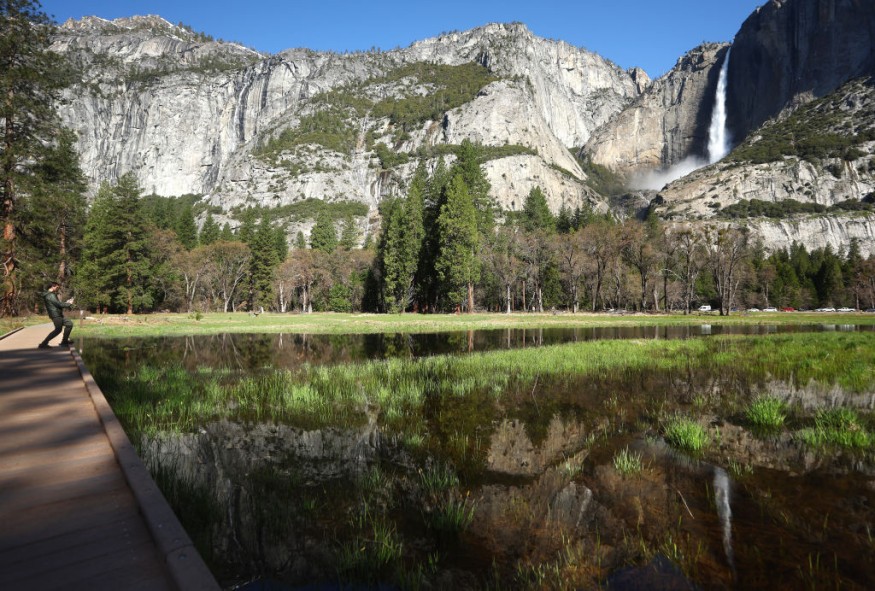The existence of national and recreational parks has been necessary in supporting the conservation and stewardship of the land, water, and natural resources.
These parks are considered to have played an important role in ensuring the health of the environment as they are of help in maintaining healthy ecosystems, providing clean water and clean air, and enabling conservation of natural resources.
However, the preservation of these national parks have been affected by the urbanization that seems to be unavoidable at present times.
The United States Environmental Protection Agency defines urbanization as the concentration of human populations into discrete areas. This concentration often leads to the transformation of land for residential, commercial, industrial and transportation purposes.
Further, urbanization can include densely populated centers, as well as their adjacent periurban or suburban fringes.
Parks and public lands often serve an essential role in preserving natural resources and wildlife habitats, protecting clean water and clean air, and providing open space for current and future generations.
National Parks Essential In Preserving Ecosystem

Ryan Wilson, a wildlife biologist, explained to Nature World News how national parks are very effective at preserving and protecting the natural beauty and ecosystems of the area.
"Because they are protected by legislation, they have minimal risk of being developed in the future, ensuring that their ecosystems remain intact. And because their primary purpose is to preserve these areas, they can implement other rules that ensure they maintain their natural beauty," Wilson said.
"And because their primary purpose is to preserve these areas, they can implement other rules that ensure they maintain their natural beauty," he added.
Wilson also said that the benefits of protection in the national park often spill over the surrounding areas to ensure that the park has enough of a buffer from development to keep their natural beauty and function intact.
Jan Otte, one of the founders of Animals Around The Globe, shared that the Serengeti National Park, located in Tanzania, has effectively protected the annual wildebeest migration that is considered as one of nature's most spectacular events.
Otte mentioned that the preservation measures are aiming to ensure that this phenomenon can be experienced by future generations.
Despite the preservation and conservation efforts, it can be said that protected lands are not immune to threats.
According to the National Park Foundation, climate change, invasive species, habitat degradation, and ecosystem fragmentation put national park landscapes at risk and these could jeopardize critical habitat that many of the planet's incredible species rely on.
These also put rare native plants at threat for extinction.
Chris Weber, also a founder of Animals Around The Globe, said that the Sierra Nevada Mountains, where Yosemite is located, saw an increase in the number of miners searching for gold.
Weber remarked that this later led to environmental degradation, with forests being cut down to support the mining activities, and rivers being polluted with mining tailings.
The rapid influx of people also put pressure on the native flora and fauna.
Weber said that the establishment of Yosemite as a state park in 1864, as well as its designation as a national park in 1890, was aimed to protect the area from these commercial activities, including mining.
Through the course of years, the protections offered by the park's status prevented large-scale commercial extraction in the region.
"However, it's worth noting that while the creation of the park did curb large-scale mining operations, it didn't completely eradicate all commercial interests. Grazing, for instance, continued in certain parts of the park for several decades after its establishment," Weber said.
"But on the whole, the national park designation did play a significant role in preserving Yosemite's natural beauty and ecosystem from the detrimental effects of mining and other commercial activities," he added.
How Can People Be Part of Conservation Efforts?
Authorities said that as part of conservation efforts, parks and recreation professionals should become leaders in protecting open space for the common good, and actively lead in sustainably managing and developing land and resources for public use and environmental conservation for the benefit of the public and the resources.
Moreover, these park and recreation professionals should provide education and interpretation of the value of conservation to the public, connect children and youth to nature and the outdoors, and coordinate environmental stewardship with other public and nonprofit entities.
Otte also said individuals and communities can get involved through volunteering.
Otte said that many national parks offer programs where people can assist with conservation efforts, noting that on a broader scale, supporting policies and organizations that prioritize conservation can make a difference.
So far, the benefits of conservation and environmental stewardship of these national parks include the following:
- Providing carbon‐reducing sustainable landscapes that cleanse air and water, replenish aquifers, reduce stormwater runoff, and protect wildlife habitat;
- Offering the public access to safe, affordable, and healthy ways to experience and appreciate nature; and
- Contributing significantly to the economic well‐being of communities through energy and resource conservation and providing many economic benefits to communities derived from outdoor recreation.
With these benefits, the necessity of preservation has been emphasized, urging the public to be part of every effort to protect these national parks.
Related Article : Increase of National Parks Will Not be Enough to Halt Nature's Destruction, Scientist Warn Us
© 2025 NatureWorldNews.com All rights reserved. Do not reproduce without permission.





